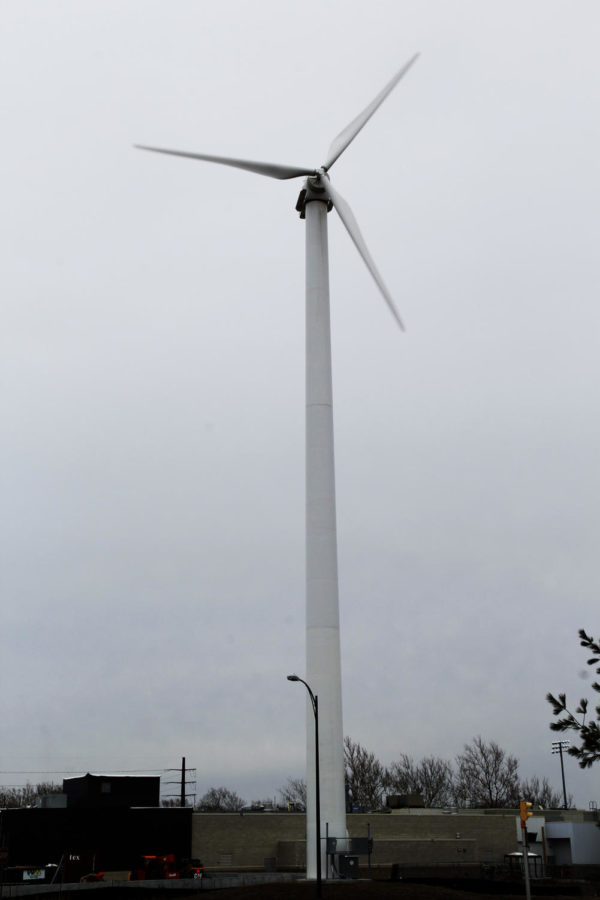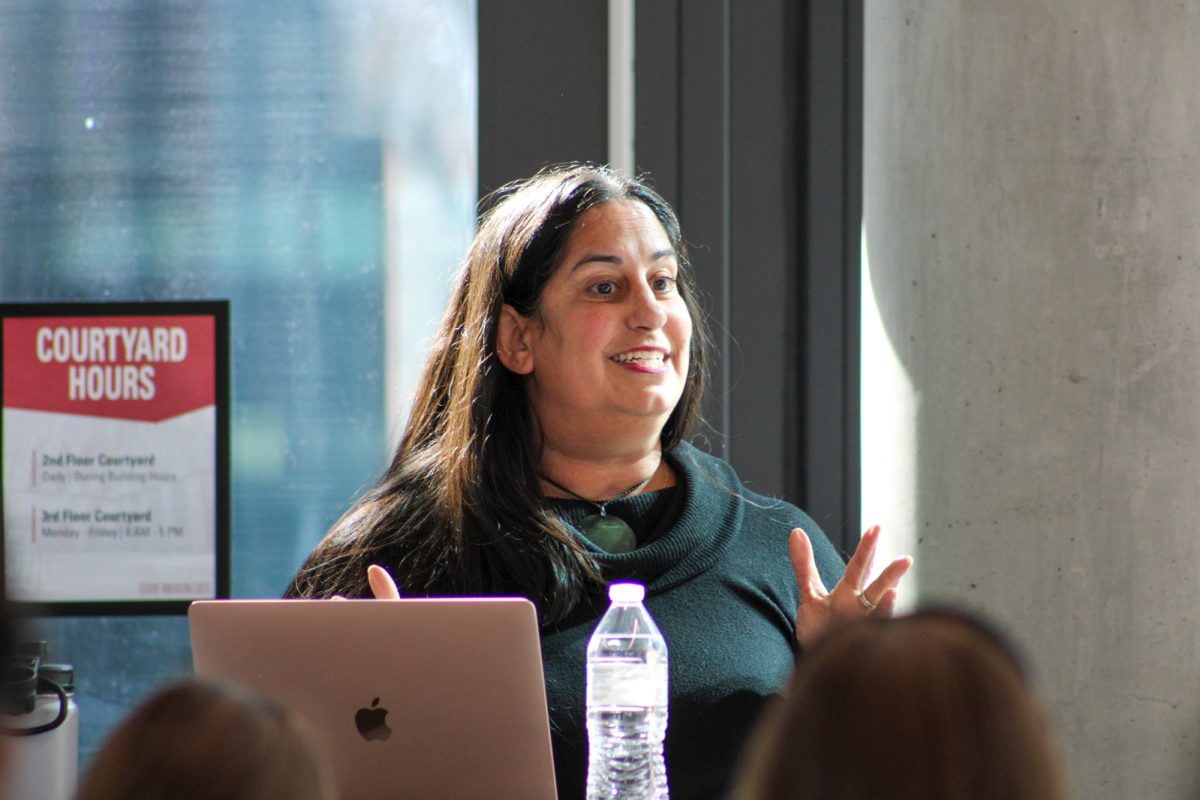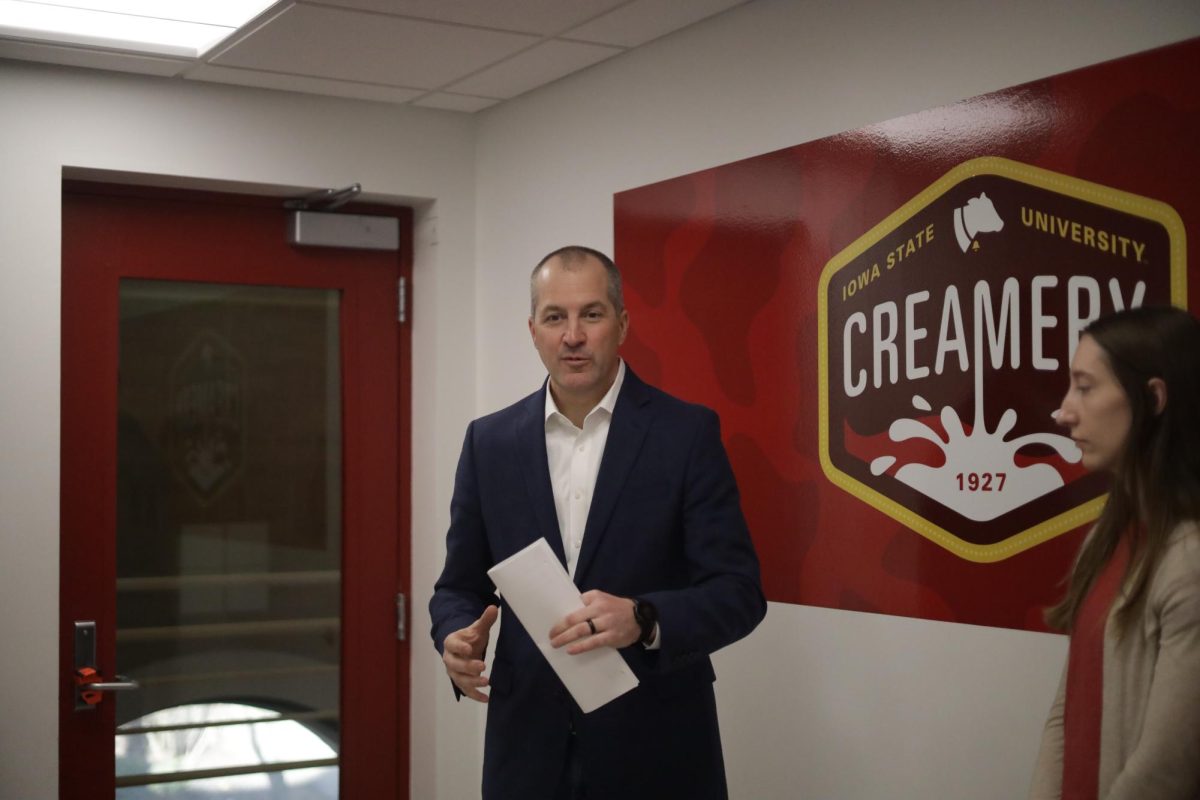ISU wind turbine conserves money, educates students
Kelby Wingert/Iowa State Daily
The 120-foot tall wind turbine located on Iowa State’s campus has saved the university 70 tons of coal over the last 14 months.
April 8, 2014
Iowa State created a new website that measures wind speed, energy production and climate from Iowa State’s wind turbine. ISU officials hope that the website will be a useful tool for academic purposes as students will be able to use data from the wind turbine.
The wind turbine was built on Dec. 19, 2012, between the power plant and the CyRide bus barn. It has saved 70 tons of coal, though it burns 280 tons of coal each day.
This January, the energy has increased 50 to 70 percent compared to last January because of the harsh and windy winter.
“There is a video that shows how the wind turbine was built. The turbine stands 120 feet tall and the blades are 38 feet long,” said Randy Larabee, assistant director of utilities.
The blades are made primarily of fiberglass. The only steel in the blades are from the nuts and bolts.
The wind turbine’s life expectancy is about 20 years. Iowa State leases the turbine for 10 cents per kilowatt, which translates to about $300,000 invested in the wind turbine.
“Iowa State University will have to decide to renew it, buy it or remove it once the lease is up in nine years,” Larabee said.
There is a website that is available to the public 24/7, and the site gives basic information about the wind turbine itself. The public can read the temperature, wind speed and energy saved during that specific time, but there is also a website that requires a password from the utility office.
That data will also be available for local schools.
The protected website is in place in hopes that middle school and high school kids will collect data and analyze the measurements for their science courses. The teachers can create curriculum that involves a tool that will collect the data for them.
The website collects real-time data on an Excel spreadsheet from which it is easy to collect data and measurements. The data includes time of year, weather, forecast, temperature and wind. The website then allows students to compare and analyze the data from days to weeks to months.
College professors and teachers have also found the website useful in their curriculum, including an Engineering 160 course, Engineering Problems with Computer Applications Laboratory.
“I downloaded 12 data files from the website for my [Engineering] 160 class,” said Scott Wendt, associate scientist in the Center for Nondestructive Evaluation. “Each file contained one months’ worth of data on wind speed and kilowatts produced.”
Wendt said the first exercise was to write a computer program to successfully open each file and read the data. The program would then find the maximum and average wind speed and print out those values and when the maximum occurred.
“Later, I plan to have the students do an economic analysis when we study engineering economy,” Wendt said.
Overall, the ISU wind turbine is being used to save energy and money as well as helping students learn from its produced real-time data.
“The wind turbine, because of its size, does not release a significant amount of energy, but that is coal that did not have to be burned,” Larabee said.







